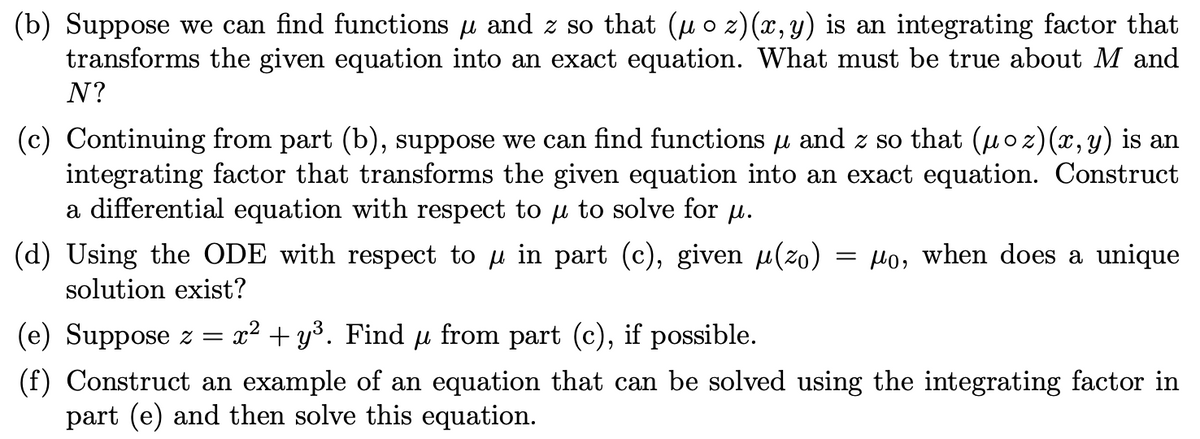Consider M(x, y)+ N(x, y) · = 0. M and Fy (a) Suppose we can find a function F example of such an equation and solve it. F(x, y) so that Fa N. Give an
Consider M(x, y)+ N(x, y) · = 0. M and Fy (a) Suppose we can find a function F example of such an equation and solve it. F(x, y) so that Fa N. Give an
College Algebra (MindTap Course List)
12th Edition
ISBN:9781305652231
Author:R. David Gustafson, Jeff Hughes
Publisher:R. David Gustafson, Jeff Hughes
Chapter2: Functions And Graphs
Section2.6: Proportion And Variation
Problem 18E
Related questions
Question
100%
Please explain each step

Transcribed Image Text:Consider M(x, y) + N(x, y) ·
dy = 0.
dx
M and Fy
: N. Give an
(a) Suppose we can find a function F
example of such an equation and solve it.
F(x, y) so that F

Transcribed Image Text:(b) Suppose we can find functions u and z so that (u o z)(x,y) is an integrating factor that
transforms the given equation into an exact equation. What must be true about M and
N?
(c) Continuing from part (b), suppose we can find functions µ and z so that (µoz)(x, y) is an
integrating factor that transforms the given equation into an exact equation. Construct
a differential equation with respect to u to solve for µu.
(d) Using the ODE with respect to u in part (c), given µ(zo)
Ho, when does a unique
solution exist?
(e) Suppose z =
x2 + y³. Find µ from part (c), if possible.
(f) Construct an example of an equation that can be solved using the integrating factor in
part (e) and then solve this equation.
Expert Solution
This question has been solved!
Explore an expertly crafted, step-by-step solution for a thorough understanding of key concepts.
This is a popular solution!
Trending now
This is a popular solution!
Step by step
Solved in 2 steps with 1 images

Recommended textbooks for you

College Algebra (MindTap Course List)
Algebra
ISBN:
9781305652231
Author:
R. David Gustafson, Jeff Hughes
Publisher:
Cengage Learning

College Algebra (MindTap Course List)
Algebra
ISBN:
9781305652231
Author:
R. David Gustafson, Jeff Hughes
Publisher:
Cengage Learning